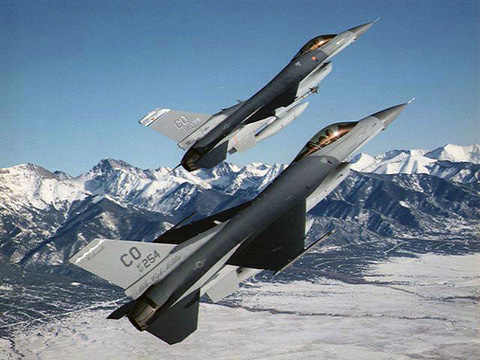Learn more about the Colorado National Guard...

Since 1860, the Colorado National Guard has served our communities, state and nation in times of peace and times of strife and always as the first military responder during state emergencies.
With an economic impact of more than $240 million, the Colorado National Guard is a diverse, community-based force of more than 5,500 Citizen-Soldiers and Citizen-Airmen from all walks of life—college students, single parents, doctors, pilots, police officers, attorneys, teachers and artisans, to name a few. These service members commit one weekend per month—and at least two weeks per year—to train and polish skills for missions both during peacetime and war. Between those military commitments, they live and work in communities across Colorado.
The National Guard is unique compared to other reserve force components because of its dual state and federal missions and because more than two-thirds of our members serve part-time.
The National Guard supports both our state and nation to provide trained, well-equipped men and women to augment the active force during national contingencies or war, and provide state assistance during disasters, both natural and manmade.
The National Guard provides a broad range of capabilities at a cost of only five percent of the total base budget of the Department of Defense.
When not mobilized for national defense, the Colorado National Guard serves under the command of the Governor through his appointed Adjutant General. The Adjutant General of Colorado is a gubernatorial cabinet member and also serves as the Executive Director of the Colorado Department of Military and Veterans Affairs.
State Mission
Under order of the Governor, the Colorado National Guard protects life, property, and preserves peace, order, and public safety when all other governmental resources have been exhausted. State missions, funded by the individual states include blizzards, floods, wildland fires, earthquakes and hurricanes. Other missions include supporting local jurisdictions with search and rescue, protection of public resources, and support to civil authorities.
Federal Mission
As part of the Total Force concept, the Colorado National Guard provides operationally ready combat units, combat support units, and highly qualified Soldiers and Airmen for contingency and humanitarian operations around the world. The Colorado National Guard also supports the National Guard Bureau's State Partnership Program through relationships with the Republic of Slovenia (since 1993) and the Hashemite Kingdom of Jordan (since 2004).
The Colorado National Guard is always ready, always there and a great value for America.
__________________________________________________________________________________________________________________
FACT SHEETS
Click here to view 160th anniversary fact sheet
Click here to view 160th anniversary video
Click here for Dual Status Command Facts